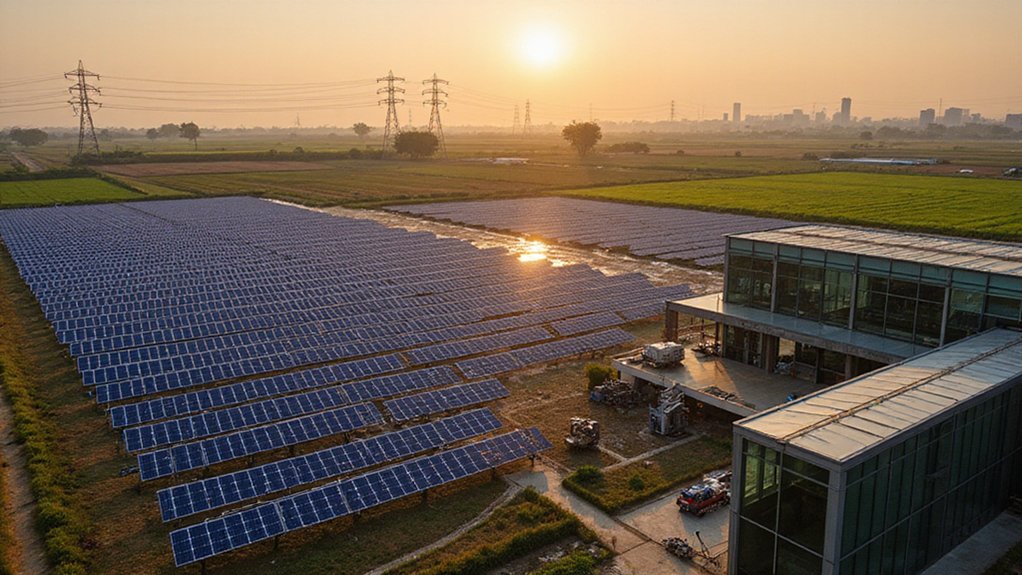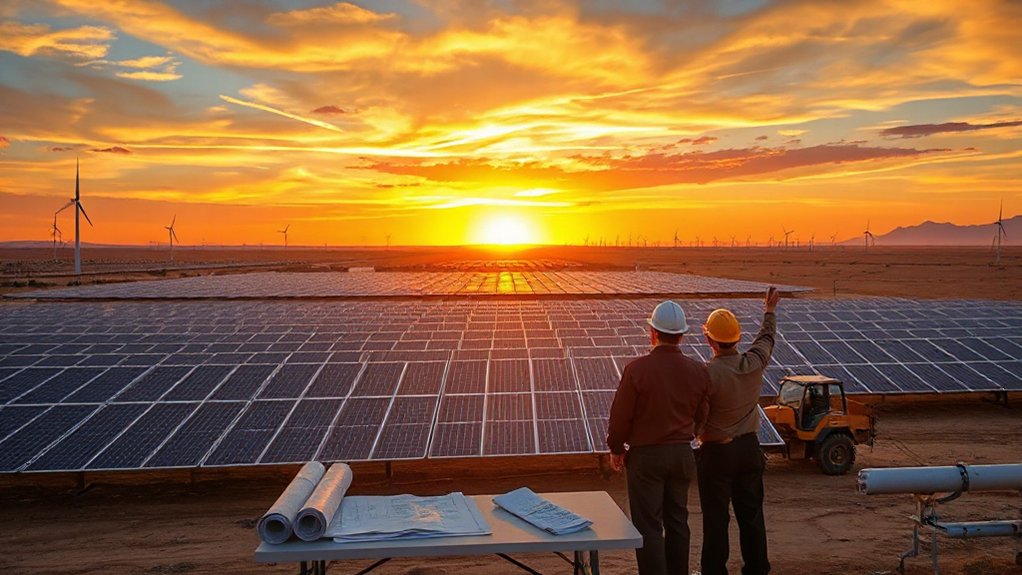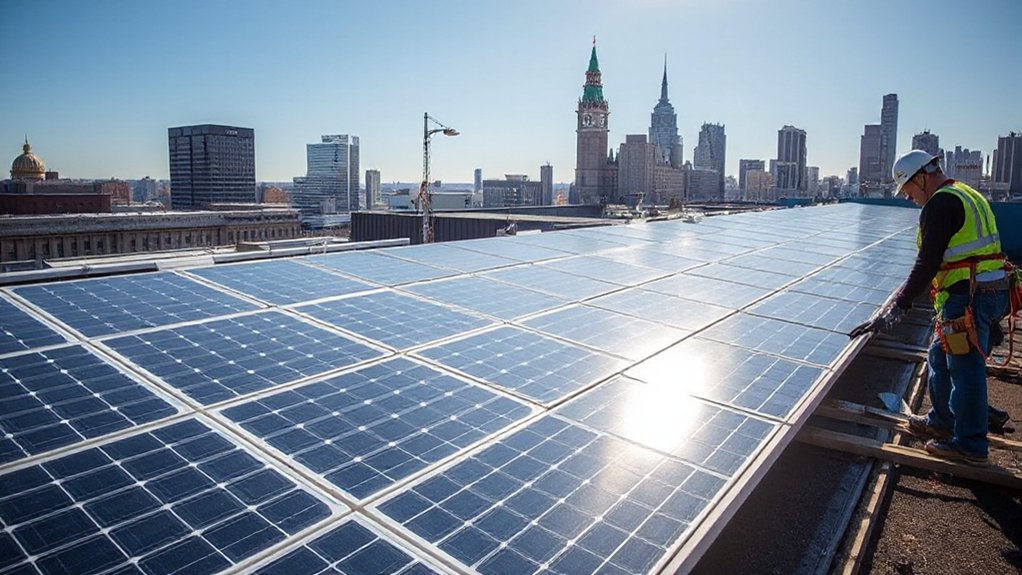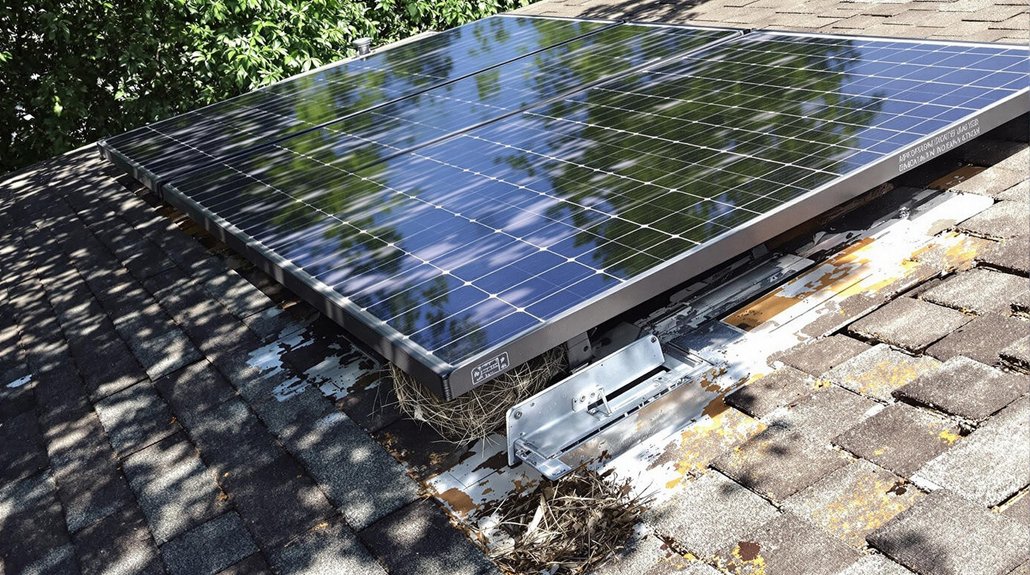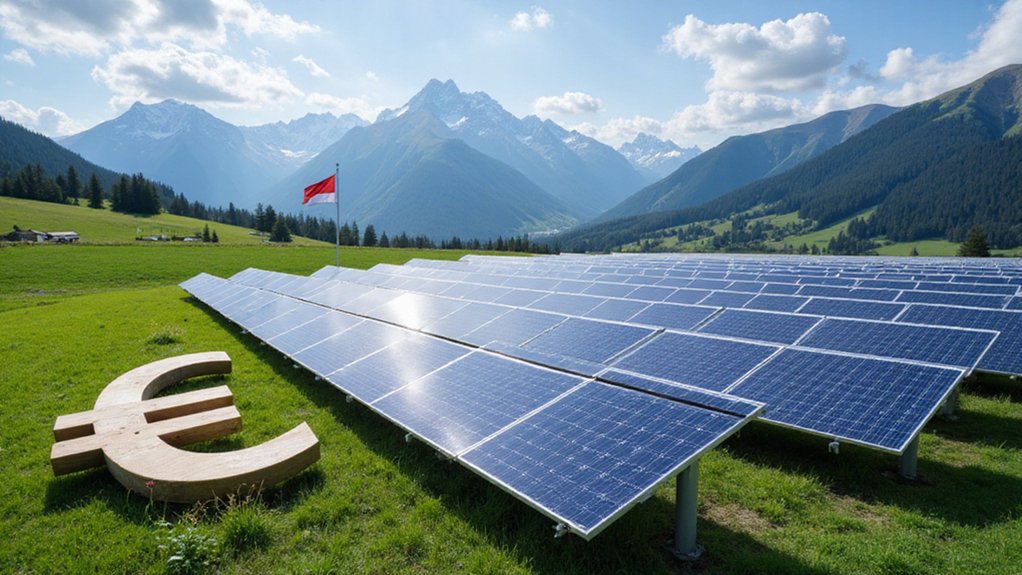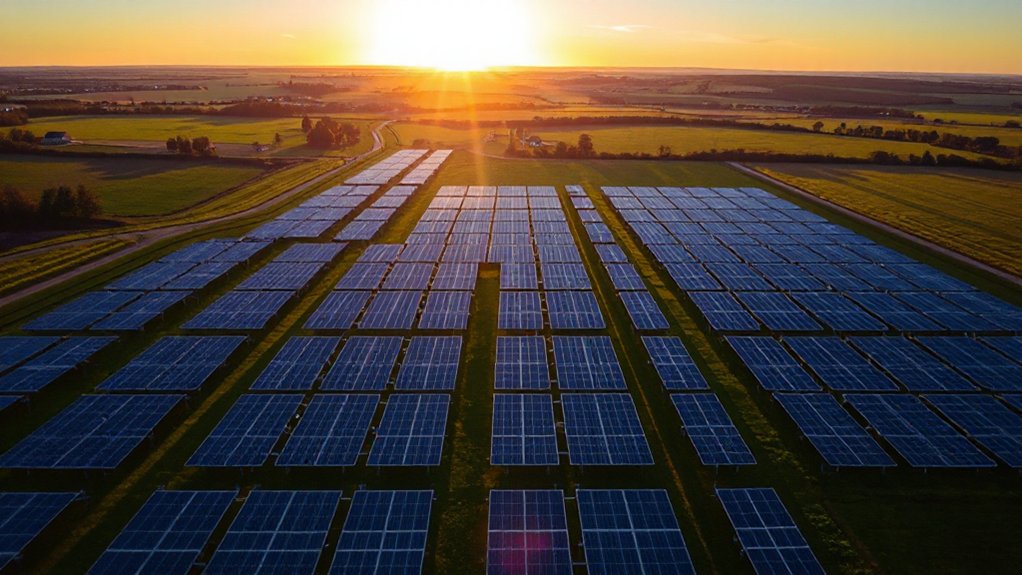India’s solar sector has transformed dramatically in recent years. Module production capacity doubled to 74 GW by March 2025, with plans to reach 125 GW by 2030. Solar installations increased 58.5% year-on-year, adding 23.8 GW of new capacity. Government initiatives like the PM Surya Ghar scheme and ALMM order have boosted domestic manufacturing and residential installations. With advanced technology adoption and regional leadership from states like Gujarat, India’s journey from import dependency to manufacturing powerhouse represents one of the fastest global energy transformations.
As India’s solar power sector reaches new heights, the country is witnessing an unprecedented boom in both manufacturing and installations. Solar module production capacity nearly doubled from 38 GW in March 2024 to 74 GW in March 2025. Experts predict this growth will continue, reaching 125 GW by 2030.
India added 23.8 GW of new solar capacity in fiscal 2025, a 58.5% increase from the previous year. Utility-scale projects made up 16.9 GW of this growth. The rooftop segment grew 72%, adding 5,148 MW, while off-grid installations nearly tripled to 1,785 MW.
Government policies have played a key role in this growth. The Ministry of New and Renewable Energy required 50 GW in tenders, while the ALMM order spurred domestic manufacturing. The PM Surya Ghar scheme boosted residential solar installations across the country. The scheme has successfully provided central financial assistance to nearly 7 lakh beneficiaries with disbursements exceeding INR 5,400 crore. India’s progress aligns with the global trend where solar power capacity accounted for three-quarters of all new renewable installations worldwide in 2023.
Technology advancements are keeping pace with capacity expansion. Over 80% of module production can now use advanced M10 and G12 wafer sizes. The top 10 manufacturers control 54% of module capacity and nearly all cell production capacity.
Rajasthan, Gujarat, and Maharashtra lead the nation in solar installations. These states benefit from high solar radiation and supportive local policies. Gujarat has emerged as the leader in the rooftop solar segment with 1,649 MW of installed capacity. Their success has helped India become the world’s third-largest renewable energy producer.
The country’s solar cell manufacturing capacity has reached 25 GW in 2025 and is expected to hit 40 GW soon. This rapid growth positions India as a global hub for solar technology production.
Corporate demand for clean energy and falling module prices have accelerated project development. The government aims for 500 GW of renewable energy by 2030, more than double the current 220 GW.
India’s evolution from an import-dependent nation to a solar manufacturing powerhouse represents one of the fastest energy transformations in the world today.
References
- https://www.pv-magazine-india.com/2025/04/01/india-reaches-74-gw-of-solar-module-capacity/
- https://www.pv-magazine.com/2025/04/11/india-installs-24-gw-of-solar-in-fiscal-2025/
- https://www.mercomindia.com/product/state-solar-manufacturing-india-2025
- https://powerline.net.in/2025/05/02/expansion-plans-policy-initiatives-and-opportunities-in-domestic-solar-manufacturing/
- https://economictimes.com/industry/renewables/indias-solar-pv-module-manufacturing-capacity-to-reach-125-gw-by-2030-pralhad-joshi/articleshow/119704301.cms
